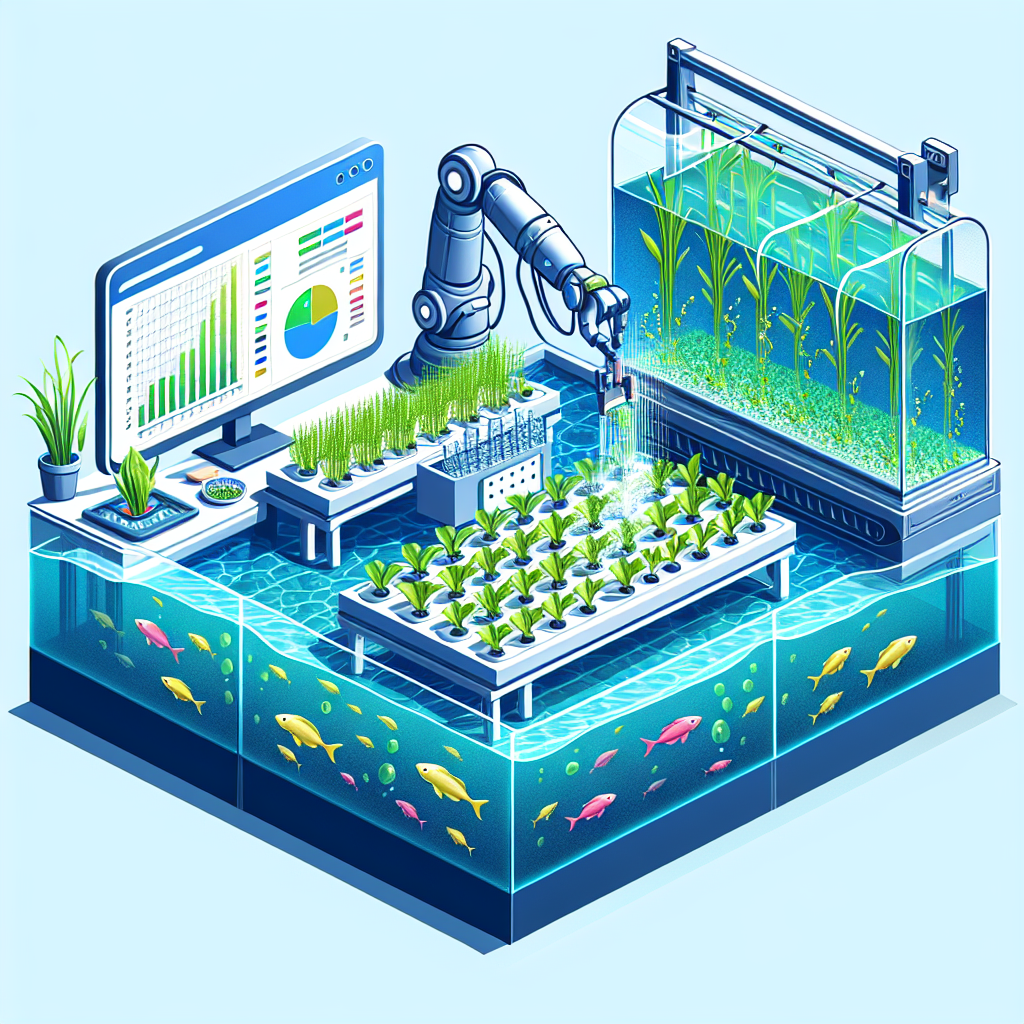Aquaponics is a sustainable farming method that combines aquaculture (raising fish) and hydroponics (growing plants without soil) in a symbiotic environment. This innovative farming technique has gained popularity in recent years due to its efficiency, productivity, and environmental benefits. With the advancement of technology, artificial intelligence (AI) has been integrated into aquaponics systems to further optimize and automate the farming process.
Using AI for aquaponics farming has revolutionized the way we grow food by providing real-time monitoring, data analysis, and decision-making capabilities. AI algorithms can analyze various environmental factors such as water quality, temperature, pH levels, and nutrient levels to ensure optimal conditions for both the fish and plants. By leveraging AI, aquaponics farmers can maximize crop yields, minimize resource wastage, and improve overall efficiency.
One of the key benefits of using AI in aquaponics farming is the ability to monitor and control the system remotely. AI-powered sensors can collect data on key parameters and send real-time alerts to farmers in case of any deviations from the desired conditions. This enables farmers to take immediate action to rectify the issue, even if they are not physically present at the farm. Additionally, AI algorithms can automate tasks such as feeding the fish, adjusting water flow rates, and controlling lighting schedules, thereby reducing the manual labor required to manage the system.
Furthermore, AI can optimize resource allocation in aquaponics farming by analyzing data on water usage, nutrient consumption, and energy efficiency. By identifying patterns and trends in the data, AI algorithms can recommend the most efficient use of resources to maximize productivity and minimize costs. For example, AI can optimize the feeding schedule of the fish based on their growth rate and nutrient requirements, thereby reducing feed wastage and improving fish health.
Another advantage of using AI in aquaponics farming is its predictive capabilities. By analyzing historical data and environmental trends, AI algorithms can forecast future crop yields, fish growth rates, and resource requirements. This enables farmers to make informed decisions about when to harvest crops, restock fish, or adjust nutrient levels to optimize production. Additionally, AI can predict potential issues such as nutrient deficiencies, disease outbreaks, or equipment failures, allowing farmers to take proactive measures to prevent them.
In addition to improving productivity and efficiency, AI can also enhance sustainability in aquaponics farming. By optimizing resource usage and reducing waste, AI-powered systems can help minimize the environmental impact of agriculture. For example, by monitoring water quality and nutrient levels, AI can ensure that only the necessary amount of resources are used, reducing the risk of pollution and conserving natural resources. Additionally, AI can help farmers adopt more sustainable practices such as organic farming, crop rotation, and integrated pest management, thereby promoting biodiversity and ecosystem health.
Despite the numerous benefits of using AI in aquaponics farming, there are also some challenges and limitations to consider. One of the main challenges is the initial investment required to implement AI-powered systems, including the cost of sensors, monitoring devices, and software. Additionally, farmers may need to undergo training to understand how to use and interpret the data generated by AI algorithms effectively. Furthermore, there may be concerns about data privacy and security, especially if sensitive information about the farm’s operations is stored in the cloud or shared with third-party providers.
To address these challenges, it is essential for farmers to carefully evaluate their specific needs and goals before integrating AI into their aquaponics systems. Farmers should consider factors such as the size of their farm, the types of crops and fish they are growing, and their budget constraints when selecting AI technologies. Additionally, farmers should seek guidance from experts in aquaponics and AI to ensure that they are implementing the most suitable and cost-effective solutions for their farm.
In conclusion, using AI for aquaponics farming has the potential to revolutionize the way we grow food by improving productivity, efficiency, and sustainability. By leveraging AI algorithms to monitor, analyze, and optimize the farming process, farmers can achieve higher crop yields, lower resource wastage, and reduce environmental impact. While there are challenges and limitations to consider, the benefits of using AI in aquaponics farming far outweigh the drawbacks. As technology continues to advance, AI will play an increasingly important role in shaping the future of agriculture and food production.
FAQs:
Q: How does AI improve crop yields in aquaponics farming?
A: AI algorithms can analyze environmental factors such as water quality, temperature, pH levels, and nutrient levels to ensure optimal conditions for plant growth. By optimizing these parameters, AI can help farmers achieve higher crop yields in aquaponics systems.
Q: What are the benefits of using AI for aquaponics farming?
A: Some of the key benefits of using AI in aquaponics farming include real-time monitoring, data analysis, decision-making capabilities, remote control, resource optimization, predictive capabilities, and sustainability.
Q: What are the challenges of using AI in aquaponics farming?
A: Some of the challenges of using AI in aquaponics farming include the initial investment required, training needs, data privacy and security concerns, and the need for expert guidance in selecting and implementing AI technologies.
Q: How can farmers integrate AI into their aquaponics systems?
A: Farmers can integrate AI into their aquaponics systems by selecting suitable AI technologies based on their specific needs and goals, seeking guidance from experts in aquaponics and AI, and undergoing training to understand how to use and interpret the data generated by AI algorithms effectively.

